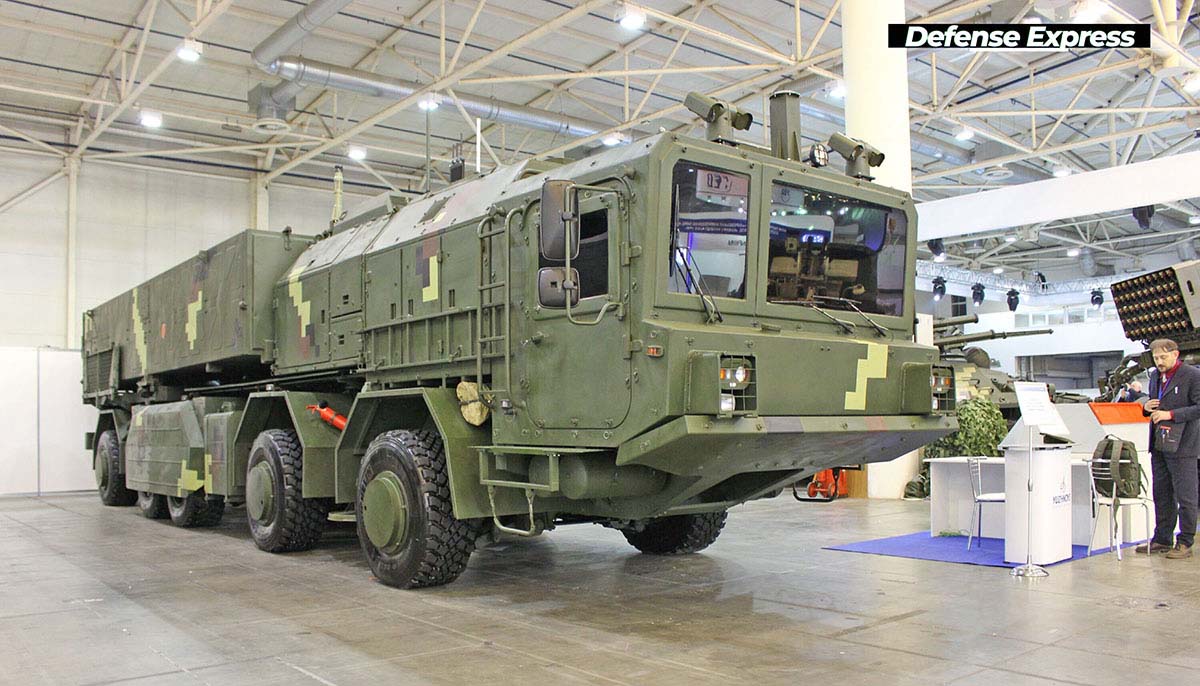In a recent announcement that caught the attention of military analysts worldwide, Ukrainian President Volodymyr Zelenskyy revealed the successful testing of a new ballistic missile.
This development marks a significant milestone in Ukraine's efforts to bolster its defense capabilities amidst the ongoing war with Russia. In it, Russia has unlimited possibilities to strike objects anywhere in Ukraine’s rear, while Ukraine’s partners have maintained a ban on striking any objects in Russia with Western weapons.
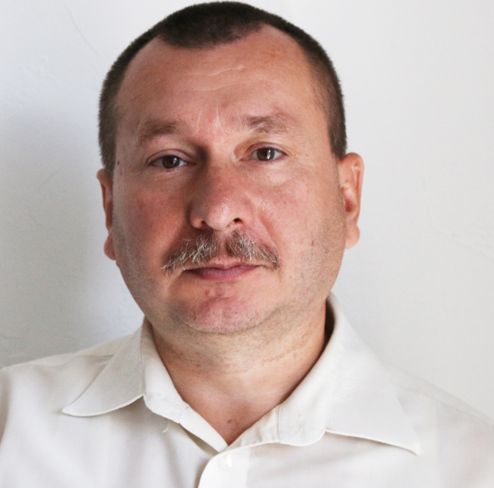
This prohibition has been slightly lifted in recent months to allow use in Russia’s border regions, but Ukraine still pleads for NATO partners to allow striking Russian military factories and airfields in Russia’s deep rear.
Amid these constraints, Ukraine has plugged away at building its own domestic weapons production, creating a drone fleet that struck a Russian oil refinery 1,500 km from the Ukrainian border and the “drone missile” Palyanytsia, with a reported range of 700 km.
To understand the implications of the ballistic missile test and the broader context of Ukraine's missile and drone programs, we spoke with Oleksandr Saienko, defense expert at NAKO (Independent Anti-Corruption Commission), colonel, military attaché in France (2011-2012), brigade commander (2022-2023).
In his view, if Ukraine were to start using domestic missiles against Russian objects, it may push Ukraine’s Western partners beyond their fears of “Russian escalation” to also allow the use of their missiles deep into Russia.
Ukraine's new deterrent is likely the Sapsan missile system
According to Saienko, the missile Zelenskyy mentioned is likely the Sapsan, an operational-tactical missile system that Ukraine has been developing since 2009.
Saienko explained that this was the only project that Ukraine had worked on for a long time and that it was almost at the final stage. "It's probably this missile because it doesn't make sense to talk about any other ballistic missiles, as Ukraine is limited by the Intermediate-Range Nuclear Forces Treaty (INF)," he told Euromaidan Press.
This treaty, a landmark Cold War-era arms control agreement signed between the USA and USSR back in 1987, aimed to eliminate missiles with a range between 500 and 5,500 km. However, the United States withdrew in 2019, citing Russia’s violation of the treaty by developing an Iskander-M system with a range of over 2,000 km.
Sapsan, Ukrainian for Peregrine falcon, has a declared range of up to 500 kilometers and falls within the limits set by the INF. Critically, it can be used as an anti-ship and air defense missile, Saienko says.
This range, while not reaching Moscow, could potentially strike targets in Crimea, including the Crimean Bridge, and other strategically important areas currently under Russian control.
Why Ukraine needs ballistic missiles
Ballistic missiles have emerged as a crucial element in the ongoing war in Ukraine, providing a significant advantage to the side possessing them. Unlike cruise missiles, ballistic missiles attack their targets almost vertically in the final stage, at high speeds, leaving minimal chances for air defense systems to intercept them.
These missiles can be launched from stationary or mobile ground-based launchers, ships, submarines, and aircraft. They can carry fragmentation-explosive, cluster, or even nuclear warheads. Ballistic missiles are categorized by range: short-range (250-1000 km), medium-range (1000-2500-4500 km), and intercontinental (4500-6000 km).
In the Russian arsenal, the Iskander-M ballistic missile system has been particularly prominent. These powerful missiles, 7.2 meters long with a 500 kg warhead, can travel at speeds up to 2100 m/s in their final stage. An Iskander can cover its maximum range of 400-500 km in just 5-6 minutes, with even shorter flight times when launched from closer distances.
According to Oleksandr Saienko, an air-launched modification of the Iskander missile, the Kinzhal, is particularly dangerous: it already has hypersonic speed when it’s launched, as it doesn’t need to overcome gravity.
The Russian military has employed Iskanders to strike military airfields in Poltava, Dnipropetrovsk, and Kirovohrad oblasts and to attack HIMARS and Patriot missile systems. The typical attack pattern involves a Russian reconnaissance drone locating the target, transmitting coordinates, and then striking a ballistic missile within minutes.
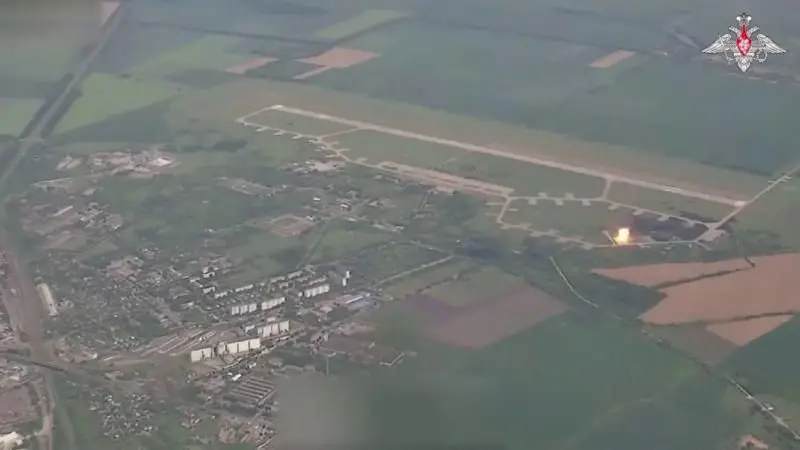
The frequent and effective use of these missiles has likely depleted Russia's ballistic missile stockpiles, leading to reported acquisitions from North Korea. Intercepting ballistic missiles remains one of the most challenging tasks for Ukrainian air defense. According to information from Commander-in-Chief of the Armed Forces of Ukraine Oleksandr Syrskyi, Russia has launched 1,300 Iskander ballistic missiles since the full-scale invasion began, with only 56 successfully intercepted.
Coupled with the reluctance of Ukraine’s Western allies to allow strikes on Russian military objects inside Russia, Ukraine worked in overdrive to create a ballistic missile of its own since the Russian invasion.
Ukraine’s ballistic missile program: an answer to Russia’s Iskander missiles
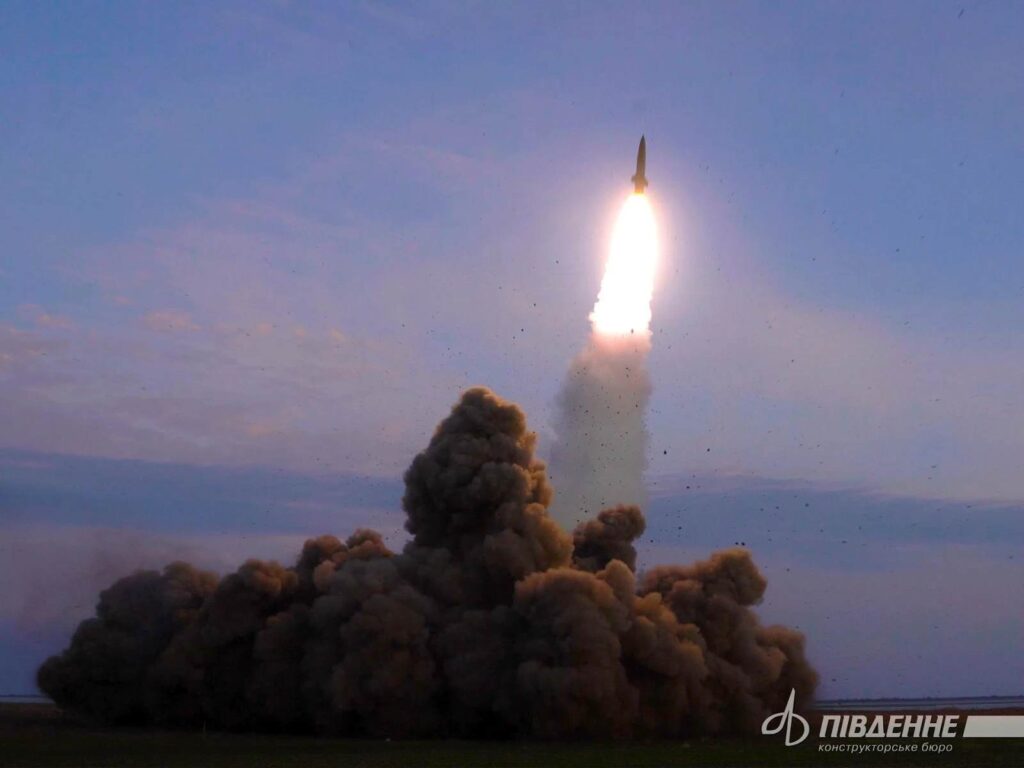
Saspan has its roots in the country's efforts to modernize its military capabilities following the collapse of the Soviet Union. Here's a chronological overview of its development:
1994: In the city of Dnipro, Ukraine began developing an operational-tactical missile with a range of up to 500 km, initially called Borysfen. This project aimed to replace the aging Soviet-era 120-km Tochka-U missiles. 90 of Tochka-U units were Ukraine’s only missile weapon to defend against Russia’s full-scale invasion before the arrival of Western ATACMS and HIMARS.
2006: Under President Viktor Yushchenko's administration, Ukraine revisited the idea of creating a new multifunctional operational-tactical missile complex. This project, now named Sapsan, was designed to be versatile, capable of serving as an operational-tactical, anti-aircraft, or anti-ship complex.
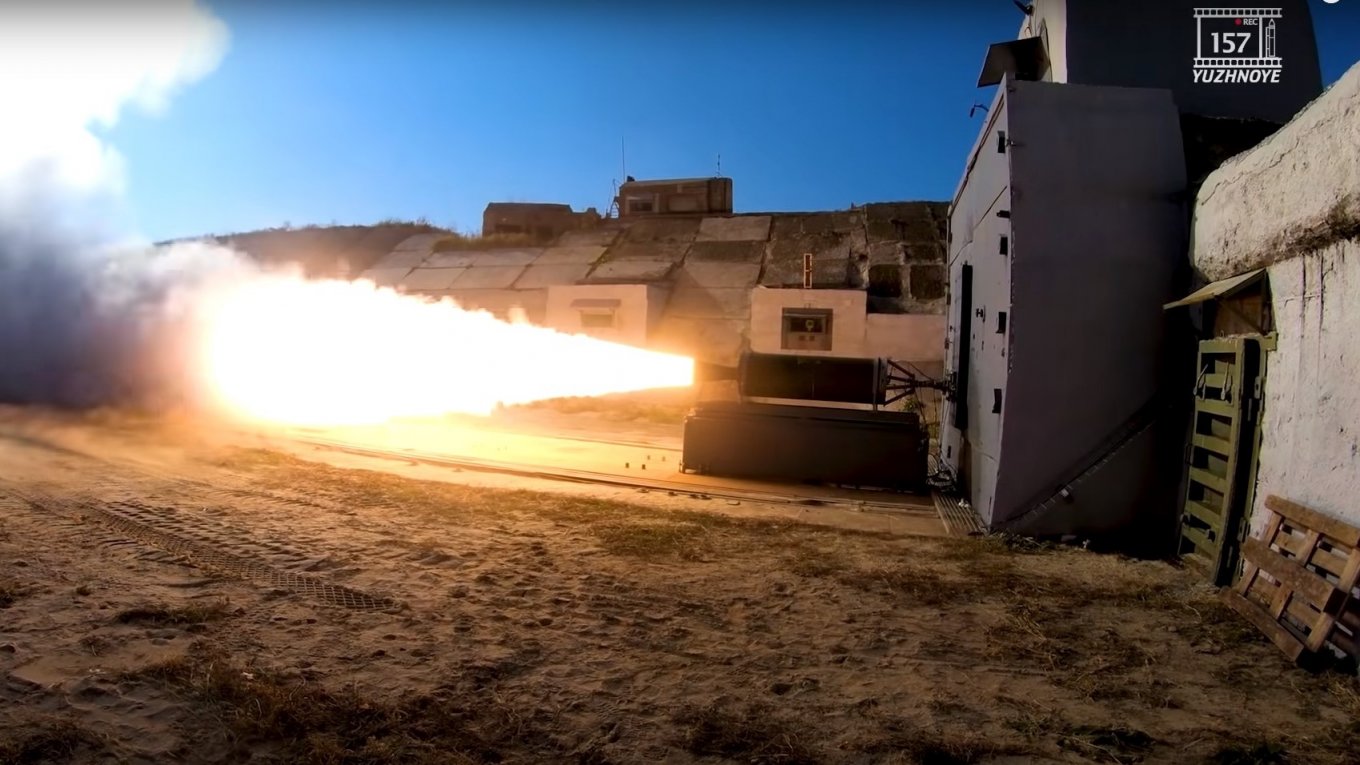
2006-2013: Development of Sapsan continued, albeit with significant funding challenges. Over these seven years, only $25-40 million was allocated to the project, representing just 5-10% of the planned budget. The Sapsan missile was developed with a 0.9 meter diameter and 500 km range, as well as the export version Hrim-2 with a diameter of 0.6 meters and range of 280 km
2013: Ukraine’s Ministry of Defense, led by Pavlo Lebedev, who had Russian citizenship, halted funding for the project, deeming it unpromising. By this time, the total project cost had nearly doubled from $450 million to $825 million. Oleksandr Saienko sees this as no coincidence: “Russia was preparing for war with Ukraine and tried to undermine our progress by any means.”
2014: Following Russia's invasion of Crimea and fostering of a war in Donbas, the Ukrainian government renewed interest in domestic operational-tactical missile weapons. The Pivdennyi design bureau, which once designed the Soviet Union’s formidable Satan intercontinental ballistic missile, proposed reviving the SAPSAN project, incorporating developments from the Hrim and Hrim-2 projects to accelerate progress.

2016: Work continued on SAPSAN, Hrim, and Hrim-2 systems. Hrim-2 attracted interest from Saudi Arabia. In December, successful Hrim tactical missile launches were reported in southern Ukraine.
The Hrim-2 system, evolving from SAPSAN, was designed as a multifunctional OTRK capable of using tactical, anti-aircraft, and anti-ship missiles. Its specifications closely mirrored SAPSAN's, with a range of 50-280 km for the export version and 50-500 km for the Ukrainian Armed Forces version.
Importantly, both SAPSAN and Hrim-2 were designed with capabilities similar to Russia's Iskander missiles. They could fly on aeroballistic trajectories, potentially evading missile defense systems. This feature made them comparable to Russian Kinzhal and Iskander systems in terms of defensive penetration capabilities.
2019: Two launch units were completed for Saudi Arabia and Ukraine. Additionally, 12 missile engines for the Hrim-2 were assembled by Ukrainian defense companies.
Trending Now

February 2021: Ukrainian Defense Minister Andrii Taran stated that the SAPSAN was 80% complete, emphasizing the need to finalize the first prototype of this advanced weapon.
April 2021: Deputy Defense Minister Andrii Myroniuk specified that the production level of the first OTRK battery was at 70%.
Since Russia's full-scale invasion of Ukraine on 24 February 2022, official information about Ukraine's missile programs has become limited due to security concerns in the ongoing war. However, Taras Chmut, military expert and head of the charity Come Back Alive, mentioned in an August 2024 interview that Ukraine is developing three Sapsan models, but did not specify how they differ.
It is unclear where Ukraine’s ballistic missile was tested. Defense expert Ivan Kyrychevskyi believes this happened on the battlefield, directly against Russian troops.
How Ukraine’s ballistic missile can affect the battlefield
“There's no such thing as a silver bullet, no weapon now that can fundamentally turn the tide,” Saienko says. However, Ukraine’s ballistic missiles can help by:
- disrupting logistical routes that Russia uses to transport ammunition, weapons, and their military to the front line by destroying them on the approach routes where they're most vulnerable.
- destroying the depots that Russia pulled back out of the range of 300-km ATACMS strikes;
- destroying airfields and aircraft on airfields, including in Krasnodar Krai. With a range of up to 500 kilometers, SAPSAN could hit targets in Yeysk, where one of the most powerful Russian air groups is located, as well as objects in Crimea, particularly the Crimean bridge – a target that Ukraine currently lacks the capability to strike effectively.
These goals are included in the catalog of targets that Ukraine pleads to be allowed for striking with NATO weapons such as ATACMS missies – a goal complicated by America’s fear of “Russian escalation.”
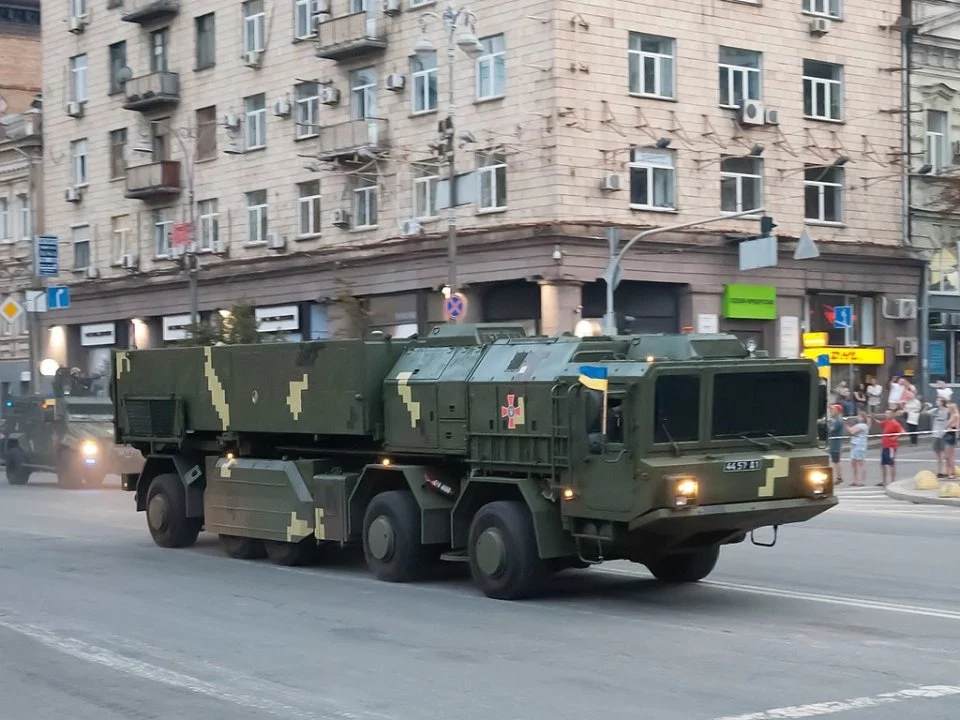
If Ukraine had domestic missiles in its arsenal, it would be able to conduct a bolder military strategy without the need to plead for permission – a situation that Ukrainian military expert Mykhailo Samus described to Euromaidan Press as “protecting Russian territory from Ukrainian forces.”
However, to make a strategic impact on the battlefield and reliably disable Russia’s management and procurement systems, Ukraine must have a “simultaneous coordinated volley of hundreds of ballistic and cruise missiles," military expert Mykola Bielieskov told Euromaidan Press, as many will be intercepted by Russia’s air defenses.
To achieve this effect, Ukraine must produce at least several hundred ballistic and cruise missiles annually. Most of these should have a range of up to 800 kilometers. “We also need to destroy the Russian defense industry, which is mainly located at a range of 1500 kilometers. Therefore, we also need missiles that can reach this distance,” Valeriy Romanenko, a senior researcher at the State Aviation Museum, told DW.
Yet Ukraine can achieve a powerful deterrent effect even if it will have only enough ballistic missiles to inflict damage to Russia’s operational troop structure, Oleksandr Saienko notes:
“Russia will be forced to pull back its operational and tactical assets, its aircraft. That is, the number of raids on Ukraine will decrease. It will be much easier for soldiers at the front because, logistically, we'll be able to hit enemies even when they're just loading up.”

Hi! My name is Alya Shandra, I'm the author of this piece. I believe in the power of data and analysis, and that's why we try to give you the best of it at Euromaidan Press.
Become our patron to help us bring you the best insights from Ukrainian and foreign analysts so we can cut through the noise together.
Regarding how Ukraine’s ballistic missiles can be guided, Ukraine can employ the same technology as Russia – reconnaissance drones flying into Russian territory. From all logic, Ukraine already has the capability: its long-range drone strikes need to be guided somehow – the drone needs to arrive at exactly the moment when aircraft are present on an airfield or know the exact location of a fuel tank – otherwise, the strikes won’t be impactful.
“This means that Ukraine has the ability to conduct reconnaissance and see these objects almost in real-time to adjust the guidance of drones. The same will happen with our operational-tactical missiles,” Saienko says.
Naturally, Russia will attempt to shoot down the missiles, but Ukraine will need to be engaged in a “competition of minds,” Saienko says. There are ways to evade Russia’s air defenses, such as choosing the right trajectory, using using electronic warfare tools, choosing the right weather conditions, destroying air defenses before launching an attack, and simultaneously launching drones.
The role of western production in Ukraine’s ballistic missile program
How many missiles Ukraine can produce is kept secret, but Zelenskyy’s announcement of the ballistic missile test means that Ukraine has the capacity and protected resources for such an undertaking, Saienko says. This production can be greatly boosted if it takes place in cooperation with Western countries, as production outside Ukraine will be protected from Russian attacks.
Saienko emphasizes the crucial role that Western support could play in accelerating Ukraine's missile and drone programs. "First of all, it's the transfer of Western technologies that are in the West, what we lack to develop strategic drones, including navigation tools, communication tools, electronic warfare tools," he states.
He also calls for the establishment of joint production ventures, arguing that this would enhance Ukraine's capabilities and provide greater security for the production process.
Serhiy Zhurets, director of the information-consulting company Defense Express, concurs. In an interview with DW, he stresses that Ukraine must go beyond its Soviet potential and employ modern solutions. Ukraine could, for example, partner with leading American companies to employ guidance systems from American missiles and access solid fuel used in ATACMS or other missiles. Additionally, new forms of interaction and cooperation can be sought with Poland, which is trying to develop missiles in cooperation with South Korea.
Importantly, Saienko pleads with Western partners to stop the flow of technology to Russia. "Those missiles that fly into Ukraine have elements of Western equipment, microchips, chips, component parts," he stresses. This most recently came to light when a Russian Kh-101 cruise missile struck the Children’s Hospital in Kyiv and was shown to have parts from 15 Western tech companies.
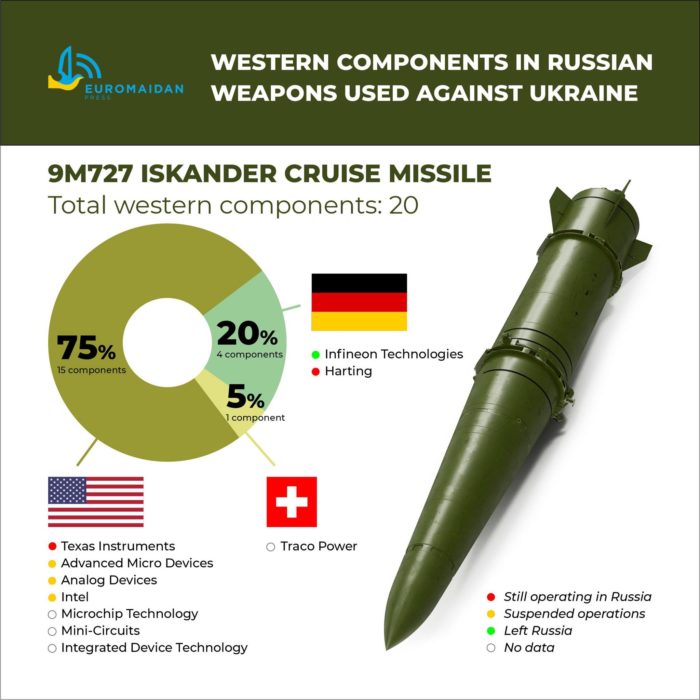
In any case, Ukraine’s testing of a ballistic missile is a very positive development. According to Defense Express, the number of countries developing their own domestic ballistic missiles is quite small: only the USA, Türkiye, Israel, India, Pakistan, North and South Korea, Russia, and China have such programs.
“The very fact of a successful ballistic missile test puts Ukraine in a narrow elite club of countries that possess such sophisticated missile technology,” Defense Express notes.
Related:
- Ukraine lobbies US to stop “protecting Russia,” allow 300km deep strikes
- Drone dogfights: Ukraine’s novel strategy to counter Russian reconnaissance UAVs
- Researcher: Ukraine will build its own long-range missiles. If the West allows. (2022)

